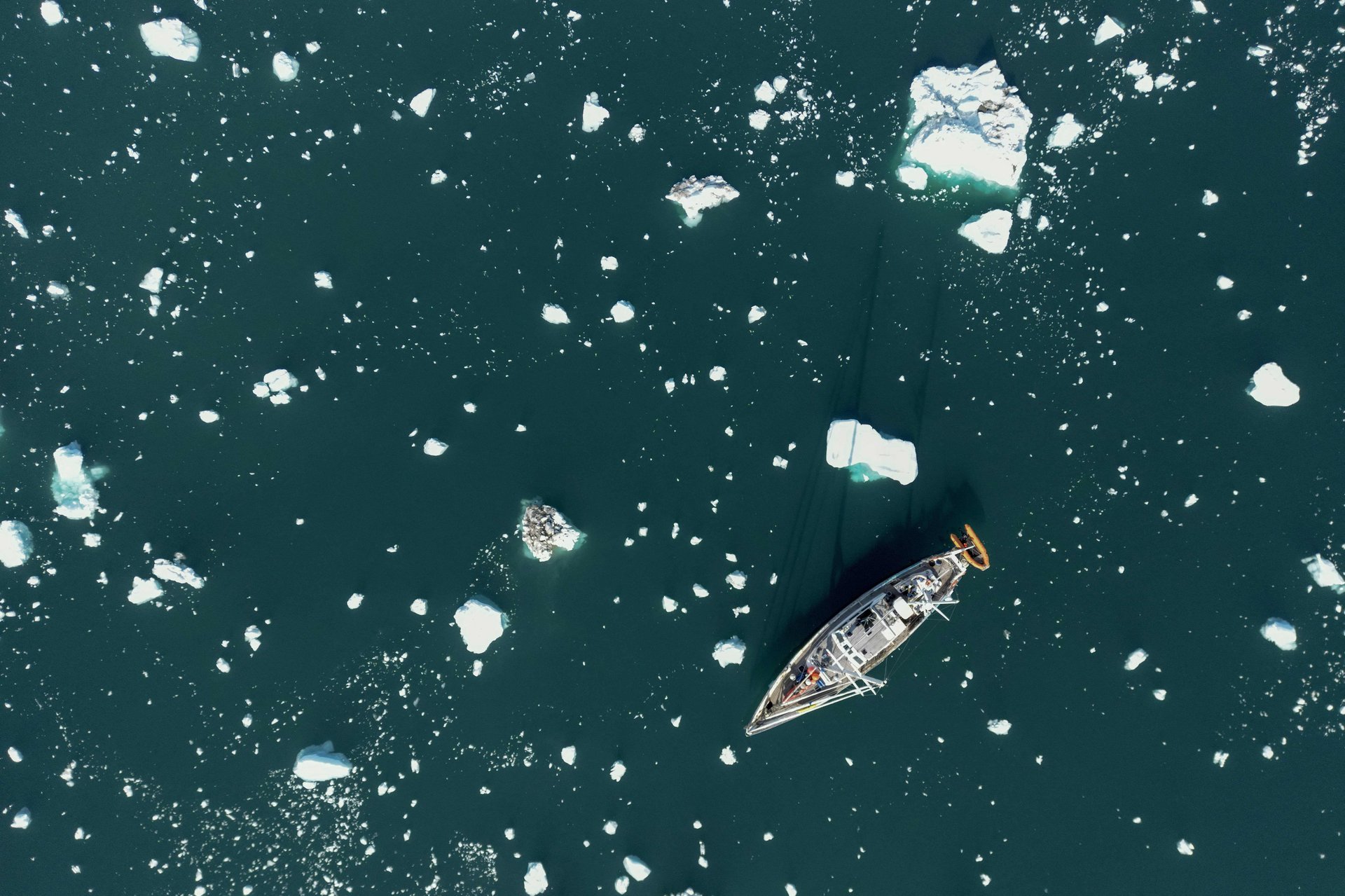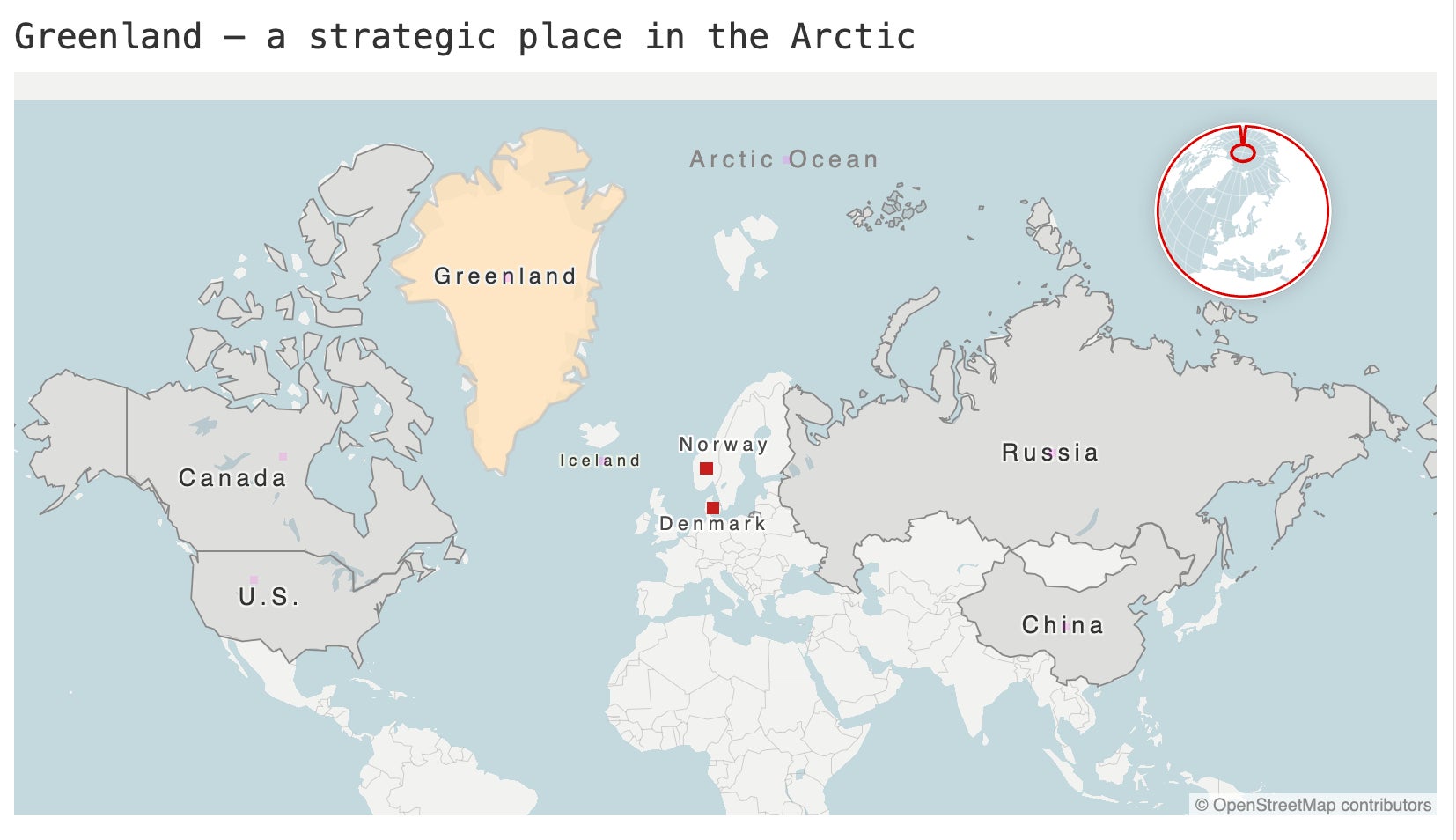Donald Trump's fixation with Greenland, explained
The Arctic region has drawn interest from the president-elect as climate change makes international shipping routes more viable

President-elect Donald Trump has been sharing his interest in acquiring Greenland, which is home to the northernmost U.S. military base, arguing its importance for both national and economic security.
Suggested Reading
Control over Greenland means strategic control over newer routes, driven by a silent force that Trump has time and again denied — climate change.
Related Content
“Greenland is a highway from the Arctic all the way to North America, to the United States,” he told Fox News (FOX) in an interview. “It’s strategically very important to the Arctic, which is going to be the critical battleground of the future because as the climate gets warmer, the Arctic is going to be a pathway that maybe cuts down on the usage of the Panama Canal.”
While Greenland is not (yet) a sovereign state under international law, it remains an autonomous territory within the Kingdom of Denmark. The island gained self-rule in 2009, giving it authority over most domestic matters, while Denmark retains control of foreign affairs, defense, and monetary policy.
Trump’s renewed interest in acquiring the territory — whether through purchase or, as he recently suggested, potential military force — has prompted sharp responses from both Danish and Greenlandic leaders. Danish Prime Minister Mette Frederiksen and Greenland’s Prime Minister Múte Egede have repeatedly emphasized that the territory is not for sale, though Denmark has indicated openness to discussing increased U.S. military presence on the island.
The strategic value of Greenland extends far beyond shipping routes. The region holds vast deposits of rare earth minerals crucial for renewable energy technology. These untapped resources are essential components in manufacturing everything from power-storing batteries to windmill magnets, making the territory increasingly attractive to global powers racing to secure sustainable energy supply chains.
“Greenland has lost massive amounts of ice, making it more attractive for rare earth mining and oil drilling, while we are already seeing more traffic through the Arctic Ocean as it becomes ice free for longer,” Alice Hill, a former climate advisor to Barack Obama and now a fellow at the Council on Foreign Relations, told The Guardian.
As the ice melts, the world’s largest island between the U.S., Russia and Europe is opening critical routes, making it more important, both strategically and geopolitically. Along with the U.S., Russia and China are also seeking to expand their footprint.
“[China] is one of the newer entrants on the scene,” Iris A. Ferguson, the deputy assistant secretary of defense for Arctic and Global Resilience, said last year in an interview with the Department of Defense News.
“Over time, the strategic interests that they have in the region are … giving us pause. How their long-term vision for the region could affect our interests, is [also] giving us pause.”

In the Arctic, two shipping lanes are navigable during the summer — Northwest Passage or Northern Sea Route (which transits Canada and the U.S.) and Northeast Passage (which follows the Russian Arctic coast and continues into Europe). The Arctic is warming four times faster than the rest of the globe, leading to longer ice-free periods that expand navigable areas along these shipping routes.
Researchers at NASA’s Jet Propulsion Laboratory reported in a new paper that of the 207 glaciers included in their study, 179 had retreated significantly since 1985, 27 held steady, and one advanced slightly. Such a continuing trend could increase sea levels by 23 feet if the region’s ice melts completely, according to NASA.
Jason Box, a climatologist at the Geological Survey of Denmark and Greenland, highlighted the alarming scale of ice melt. “The annual ice loss of the Greenland ice sheet is the equivalent of each person on the planet filling a bathtub with water every day of the year! That is around 8 billion bathtubs that can hold 100 liters,” he said in an interview with The Arctic Council.
Arctic shipping traffic has already increased by 37% over the past decade, according to the data compiled by the Arctic Council. At an average speed of 20 knots, the Northwest Passage takes 14 days from the key port of the U.K. to Vancouver, Canada, in comparison to 18 days via the Panama route.
While newer and shorter shipping routes due to melting glaciers may seem attractive to the shipping industry, it does not always mean it’s practical —especially due to the lack of infrastructure, high insurance cost, and the risk involved due to unpredictable weather and harsh polar conditions.
Two years ago, with the intention of becoming the first-ever nonstop circumnavigator across the Arctic Ocean, Chinese sailor Zhai Mo set out to sail through the Northwest Passage in four months. However, the journey took a year and a half and was reportedly interrupted by an iceberg.
In an interview with Scientific American, Melody Brown Burkins, who works on science policy and diplomacy in the Arctic and globally at Dartmouth College, points out the complications of sailing the waters that remain treacherous despite climate change. She said, “You can say there’s going to be less ice, but there’s going to be a lot more ice drifting around to puncture ships.”
